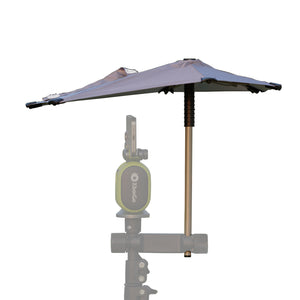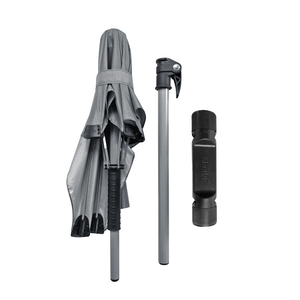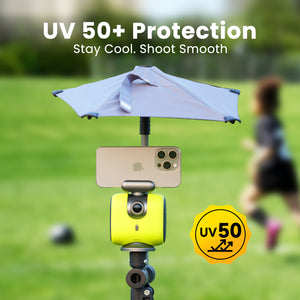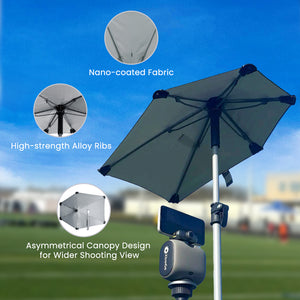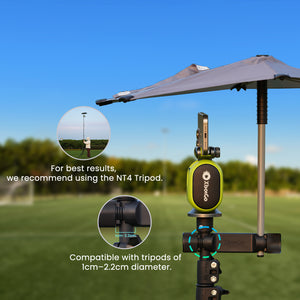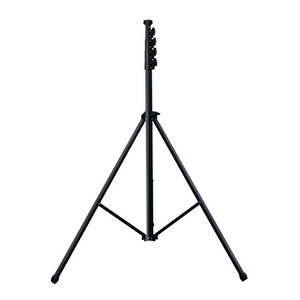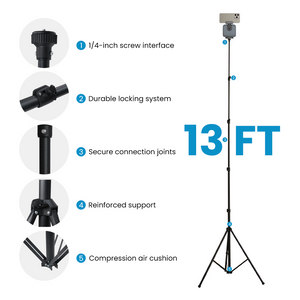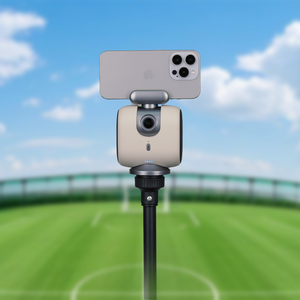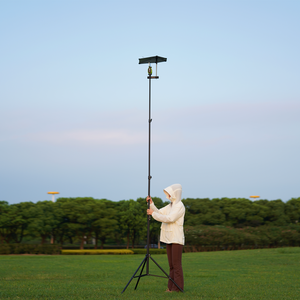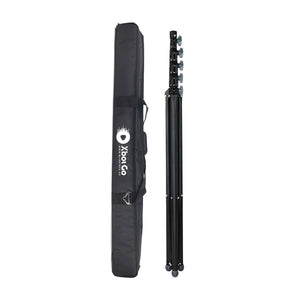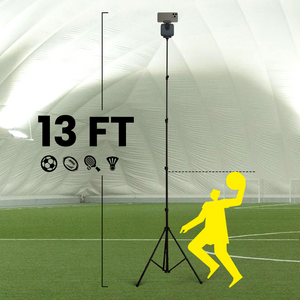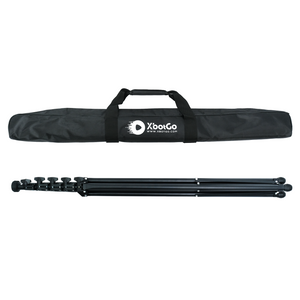XbotGo Chameleon AI Sports Camera
¿Cuánto dura un partido de hockey? La guía completa
El hockey, con su acción vertiginosa y sus golpes demoledores, es uno de los deportes más emocionantes para ver. Pero si planeas asistir a un partido o programar tu horario para verlo, seguramente te preguntas cuánto tiempo te llevará. La sorprendente verdad es que, aunque el reloj oficial marca 60 minutos, en realidad estarás viendo el partido entre 2.5 y 3 horas . Las cadenas de televisión reservan 2 horas y 45 minutos para las transmisiones de la NHL , y hay una buena razón por la que ese tiempo extra es importante para cualquier aficionado al hockey.
Tanto si vas a ver tu primer partido de la NHL, como si vas a ver el partido de hockey juvenil de tu hijo o estás planeando una reunión para ver un partido de hockey universitario, esta guía desglosa exactamente qué esperar y cómo planificarlo en consecuencia.
La realidad contra el reloj
Oficial vs. Tiempo real
Un partido estándar de hockey consta de tres periodos de 20 minutos, sumando un total de 60 minutos de tiempo oficial de juego . Matemáticas sencillas, ¿verdad? No exactamente.
En realidad, esos 60 minutos se extienden mucho más. Cada período suele durar entre 35 y 40 minutos en tiempo real debido a las interrupciones por penalizaciones, goles, icing y situaciones de disco fuera de juego. El reloj se detiene cada vez que el árbitro pita, lo cual ocurre con mucha más frecuencia de la que los novatos esperan.
Entre los periodos, habrá dos intermedios de 15 a 20 minutos cada uno (17 minutos es lo habitual en los partidos de la NHL). Estas pausas permiten el reacondicionamiento de la pista, la recuperación de los jugadores y, por supuesto, los anuncios publicitarios que mantienen la rentabilidad de las ligas.
¿Por qué los juegos duran más?
Varios factores transforman ese práctico programa de 60 minutos en una velada completa de entretenimiento:
Interrupciones en el juego : Cada silbato detiene el reloj. Ya sea por una penalización, un fuera de juego o un disco que sale disparado a las gradas, estas interrupciones añaden un tiempo considerable. Durante las jugadas de poder, cuando un equipo tiene más jugadores en el hielo debido a las penalizaciones del oponente, el juego suele tener más interrupciones mientras los equipos ajustan sus estrategias.
Pausas comerciales : Los partidos de la NHL incluyen pausas publicitarias obligatorias para la transmisión televisiva: tres por período durante la temporada regular. Estas se producen en la primera interrupción después de los 14:00, 10:00 y 6:00 minutos de cada período, añadiendo aproximadamente 2 minutos por pausa.
Revisión de video : El hockey moderno incluye la revisión de video para goles, fueras de juego y otras jugadas cruciales. Si bien esto garantiza la imparcialidad, puede añadir varios minutos al tiempo de juego.
Lesiones y problemas con el equipo : Cuando los jugadores se lesionan o se producen fallos en el equipo, el reloj se detiene mientras se solucionan los problemas. Estas demoras imprevistas pueden oscilar entre 30 segundos y varios minutos.
La regla de la "hora por período"
Los aficionados al hockey con experiencia confían plenamente en una estrategia de planificación sencilla: dedicar una hora por período. Esta regla general tiene en cuenta:
- 20 minutos de tiempo de juego
- 15-20 minutos de paradas e interrupciones
- 17-20 minutos para el siguiente intermedio
Este cálculo mental te ayuda a predecir con exactitud cuándo terminarán los partidos. Si el partido comienza a las 19:00, calcula que estarás de vuelta en casa entre las 21:30 y las 22:00.
Duración por nivel de hockey
Partidos profesionales de la NHL
Los partidos de la NHL siguen el formato más estandarizado, con una duración típica de 2,5 a 3 horas desde el inicio hasta el final. Aquí está el desglose:
- Tiempo reglamentario : 60 minutos (3 períodos de 20 minutos)
- Intermedios : Dos descansos de 17 minutos.
- Tiempo total típico : de 2 horas y 30 minutos a 2 horas y 45 minutos
Si el partido llega a la prórroga, añada entre 10 y 15 minutos más para el período de muerte súbita de 5 minutos y la posible tanda de penaltis. Los partidos de playoffs pueden durar mucho más, ya que continúan con períodos de muerte súbita de 20 minutos hasta que alguien anote; no se permiten tandas de penaltis.
Duración del hockey universitario
El hockey universitario sigue la estructura de la NHL, pero suele tener una duración ligeramente menor:
- Duración del partido : El mismo formato de 60 minutos
- Intermedios : Generalmente de 15 minutos (más cortos que en la NHL).
- Pausas publicitarias : Menos frecuentes y más cortas que en los partidos profesionales.
- Tiempo total típico : de 2 a 2,5 horas
El ambiente puede ser igual de intenso, pero con menos interrupciones comerciales, los partidos universitarios tienden a desarrollarse más rápidamente.
Variantes del hockey juvenil
La duración del hockey juvenil varía drásticamente según el grupo de edad, como se ha descubierto a través de una extensa investigación comunitaria:
Ácaros (5-6 años) :
- 30 minutos de tiempo de ejecución
- Sonará un zumbador cada 3 minutos para indicar cambios de línea.
- Tiempo total: 45-60 minutos
Niños pequeños (9-10 años) :
- Tres períodos de 12 minutos
- Tiempo de ejecución o tiempo de parada según la liga
- Tiempo total: 50-70 minutos
Niños pequeños (11-12 años) :
- Tres períodos de tiempo detenido de 15 minutos
- Tiempo total: 1,5 horas
Gallos enanos y enanos (13-18 años) :
- Tres períodos completos de 20 minutos con el tiempo detenido
- Tiempo total: 2-2,5 horas
Esta progresión ayuda a los jugadores jóvenes a desarrollar resistencia al tiempo que mantiene los juegos adecuados para su edad.
Hockey internacional y sobre césped
El hockey sobre hielo internacional generalmente sigue los estándares de cronometraje de la NHL, pero el hockey sobre césped cuenta una historia diferente:
- Hockey sobre hielo a nivel internacional : 60 minutos (3 períodos de 20 minutos)
- Hockey sobre césped : Recientemente se cambió la duración del partido de 70 minutos (2 tiempos de 35 minutos) a 60 minutos (4 cuartos de 15 minutos).
- Hockey olímpico : Sigue los estándares internacionales de hockey sobre hielo.
Estas variaciones reflejan las diferentes tradiciones deportivas y necesidades de retransmisión a nivel mundial.
Factores que prolongan el tiempo de juego
Prórrogas y tandas de penaltis
Cuando el tiempo reglamentario termina en empate, el partido entra en tiempo extra; pero el formato depende de la situación:
Prórroga de temporada regular :
- Periodo de muerte súbita de 5 minutos (formato 3 contra 3)
- Si persiste el empate, se procede a la tanda de penaltis.
- Tiempo total añadido: 10-20 minutos
Prórroga de los playoffs :
- Periodos de muerte súbita de 20 minutos (formato 5 contra 5)
- Continúa hasta que alguien anote.
- Puede añadir horas al tiempo de juego.
El partido más largo de la historia moderna de la NHL vio a los Philadelphia Flyers y a los Pittsburgh Penguins luchar durante cinco períodos de tiempo extra en el año 2000; ¡eso son 92 minutos adicionales de hockey después del tiempo reglamentario!
Elementos del flujo del juego
Varios factores del juego influyen significativamente en la duración:
Penalizaciones : Las penalizaciones menores (2 minutos) y mayores (5 minutos) generan situaciones de superioridad numérica. Durante estos periodos, el juego se detiene con mayor frecuencia mientras los equipos se adaptan. Un partido con numerosas penalizaciones puede añadir fácilmente entre 15 y 20 minutos a su duración total.
Peleas : Aunque menos frecuentes hoy en día, las peleas detienen el juego por completo. El altercado, la consulta al árbitro y la evaluación de la penalización pueden añadir entre 5 y 10 minutos por incidente.
Lesiones : Las lesiones de los jugadores requieren atención inmediata. Las lesiones graves podrían añadir más de 10 minutos al juego mientras el personal médico garantiza la seguridad del jugador.
Problemas con el equipamiento : Los palos rotos, las tablas dañadas o los problemas con el equipamiento del portero detienen el reloj. Si bien los incidentes individuales son breves, se acumulan a lo largo del partido.
Impacto de la radiodifusión
La televisión influye drásticamente en la duración de los partidos a través de:
- Pausas comerciales programadas : Tres por período en horarios predeterminados.
- Intermedios prolongados : Los intermedios televisivos duran entre 17 y 20 minutos, frente a los 15 minutos de los partidos no televisados.
- Ceremonias previas al partido : Himnos nacionales, reconocimientos especiales y presentación de los jugadores.
- Retrasos posteriores al silbato : A veces, las emisoras necesitan segundos adicionales para completar los segmentos de repetición.
Estos requisitos de transmisión añaden aproximadamente entre 20 y 30 minutos a la experiencia del partido en directo en comparación con los partidos no televisados.
Planificando tu experiencia de hockey
Planificación de asistencia
Llegar a tiempo mejora tu experiencia de juego. Recomendaciones de los abonados:
Hora de llegada : Llega al estadio entre 30 y 45 minutos antes del inicio programado del partido. Esto te dará tiempo para:
- Estacionamiento y seguridad
- Encuentra tus asientos
- Ver los calentamientos (muy recomendable para quienes lo ven por primera vez)
- Aprovechar las oportunidades sin perderse la acción del juego
Inicio real del partido : A pesar de la hora de inicio publicada, el partido suele comenzar entre 10 y 15 minutos más tarde. Una hora de inicio prevista para las 19:00 suele significar que el partido comienza entre las 19:10 y las 19:15, después de los anuncios y el himno nacional.
Visualización de la gestión del horario
Para ver la televisión o reproducir contenido en streaming, implemente estas estrategias de almacenamiento en búfer:
- Partidos de temporada regular : Bloquea 3 horas
- Partidos de playoffs : Reserva de más de 3,5 horas (las prórrogas son habituales).
- Grabación de partidas : Añade entre 30 y 60 minutos al tiempo de grabación estándar.
Muchos aficionados utilizan la regla de "una hora por período" al planificar sus actividades en torno a los partidos. Este método mental rara vez falla.
Contexto histórico y moderno
Cómo ha evolucionado la duración de los juegos
La duración de los partidos de hockey no siempre ha estado estandarizada. Algunos hitos clave incluyen:
Antes de 1910 : Los partidos constaban de dos tiempos de 30 minutos.
1910-1927 : Tres períodos de 20 minutos se convirtieron en el estándar.
1942-1983 : No había prórroga en la temporada regular (los partidos podían terminar en empate).
1983-presente : Se añade la prórroga de 5 minutos a la temporada regular
2005-presente : Penaltis implementados tras la prórroga
2015-presente : Se introduce el formato de prórroga de 3 contra 3.
Estos cambios reflejan la evolución del deporte hacia finales más emocionantes, manteniendo al mismo tiempo límites de tiempo razonables para las emisoras y los aficionados.
Los Juegos más largos de la historia
Los maratónicos partidos de hockey demuestran las increíbles exigencias de resistencia de este deporte:
- Detroit Red Wings contra Montreal Maroons (1936) : 176 minutos, 30 segundos—casi tres partidos completos de hockey
- Maple Leafs contra Bruins (1933) : 164 minutos, 46 segundos
- Philadelphia Flyers vs. Pittsburgh Penguins (2000) : 152 minutos, 1 segundo—el partido más largo de la era moderna
Estas batallas épicas nos recuerdan que, si bien podemos estimar la duración de un partido, el formato de muerte súbita y tiempo extra del hockey significa que todo es posible.
Era de la radiodifusión moderna
La duración de los partidos actuales refleja las realidades de las retransmisiones modernas:
- Programación consistente : Las redes necesitan franjas horarias predecibles.
- Análisis ampliado : Segmentos entre períodos con comentarios de expertos
- Integración digital : Lo más destacado de las redes sociales y estadísticas en tiempo real
- Audiencias globales : Consideraciones de programación para espectadores internacionales
Estos factores han estandarizado la presentación del juego, manteniendo al mismo tiempo el ritmo y la emoción únicos del hockey.
Conclusión
Entender la duración de un partido de hockey te ayuda a planificar la experiencia perfecta. Recuerda lo más importante: aunque el reloj marque 60 minutos, calcula entre 2.5 y 3 horas para disfrutar del hockey. Usa la regla de "una hora por periodo" para organizar tu tiempo, llega temprano para disfrutar del ambiente y siempre deja tiempo extra por si acaso hay un emocionante tiempo extra.
Ya sea que estés viendo a las futuras estrellas de la NHL en ligas juveniles, disfrutando de la intensidad del hockey universitario o viviendo la impecable producción de los partidos profesionales, ahora tienes la información para planificar en consecuencia. La próxima vez que alguien pregunte: "¿Cuánto dura un partido de hockey?", tendrás la respuesta completa.
XbotGo Chameleon AI Sports Camera
Capture every moment with AI-powered tracking. Perfect for coaches, parents, and athletes who want seamless footage without manual filming.







 Soccer
Soccer Basketball
Basketball Ice Hockey
Ice Hockey Rugby
Rugby










